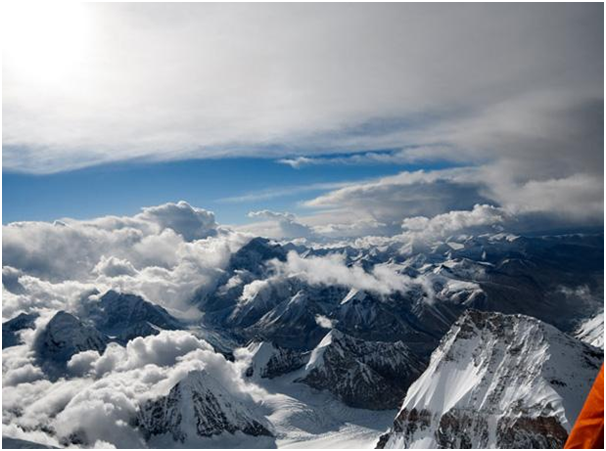Freak Weather In The Himalayan Valleys Becomes The New Normal
Climate change poses danger to habitat, livelihood in the Himalayas
The increasing frequency of weird and freak weather in the valleys of Kashmir and Chenab, and Pir Panjal range is because of climate change, the environmentalists warn.
There is enough evidence to suggest that the changing weather is a sign of climate change and that the Himalayan range, because of its topography, is one of the most vulnerable areas, they say.
Dr. Sunita Narain, one of India’s renowned environment experts, said that the “devastating floods in Kashmir in 2014 and cloudbursts in last few months in the valley and Ladakh are all indicators that weird weather is becoming a new normal in the Himalayan range.”
While delivering a lecture on ‘The Importance of Environment Management in our Climate-risked World’ at a school in Kashmir’s central Budgam district on 3 August, Dr. Narain said that due to heating up of Tibetan Plateau more and more instability was being witnessed in local weather.
She also explained in detail how rainfall pattern was changing and monsoon weakening.
“Our new finance minister is ‘Monsoon’. Holding every drop of water has become extremely critical. Seas will become warmer, monsoon may weaken, there may be more rain but we will have fewer days of rain. Weather is a complex phenomenon,” she explained.
Commenting on the pollution in Srinagar city, Narain said that on her recent visits she could hardly breathe in Srinagar.
“…I could hardly breathe in Srinagar. Number of diesel cars has gone up, sidewalks are disappearing and public transport is neither comfortable nor convenient mode of transport. You don’t have to first pollute Srinagar and then plan. Plan your city today,” she advised.
On 28 June, Sonam Lotus, in-charge of the Meteorological department in Kashmir, while speaking in Rising Kashmir’s live chat moderated by this journalist said that Kashmir, Chenab and Pir Panjal were more vulnerable to vagaries of changing weather.
Lotus said that the changing weather was part of a global climate change.
“The Kashmir and Chenab valleys and Pir Panjal mountain ranges are more vulnerable to vagaries of weather conditions because of their topography. The climate has changed globally. Even for Jammu the weather is showing signs of change. For example the monsoon in Jammu usually starts in June, but this time around it first struck Kashmir. That is because the wind flow was from the Arabian Sea,” he said.
Though Lotus cautioned that his department was not in a position to issue long range forecast because it largely relied on meteorological tools like INSAT/KALPANA, NWP (Numerical Weather Products) generated at headquarters in New Delhi and monitoring through AWS (Automated Weather System) and manual observatory, etc, Dr Narain feared the next floods in Kashmir could wreak havoc and cause more destruction than these did in September 2014.
Roughly, around one million people were rendered homeless because of the devastating floods of last year in Kashmir and most parts of Srinagar city remained either completely or partially inundated for over a fortnight.
Lotus also said that weather forecasting business was a very complex process.
“Weather forecast, you know, is a very complex issue. However, we (our department) are in a process of developing weather apps specially meant for Jammu & Kashmir to keep people updated all the time,” he said in response to a question.
Meanwhile, Narain also said that the Jammu and Kashmir government had done very little in relation to rehabilitation of Kashmir’s flood victim





